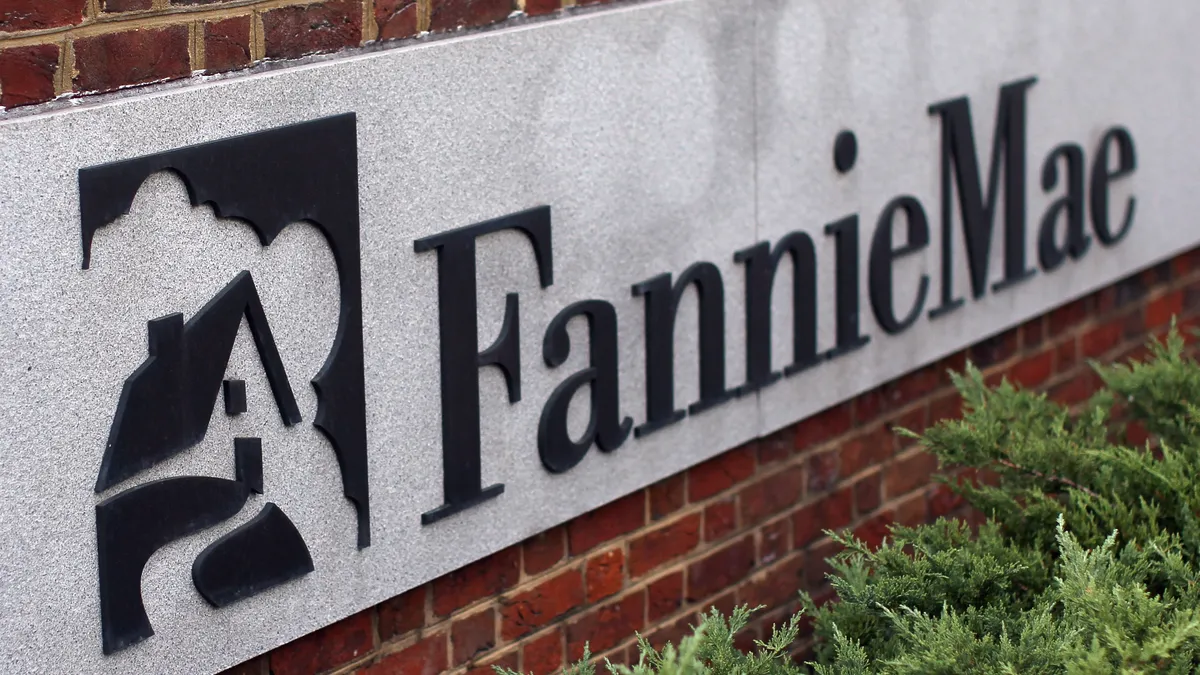Dive Brief:
- The Federal Housing Finance Agency has established lending caps of $75 billion each for Fannie Mae and Freddie Mac, giving them a total of $150 billion for 2023. Last year, the government-sponsored enterprises had $78 billion each to allocate for multifamily loans.
- Kyle Draeger, senior managing director of multifamily debt and structured finance at CBRE Capital Markets, doesn’t believe the GSEs will hit those numbers. “I think the $75 billion each is probably a fine number there,” Draeger said. “They're still going to be actively lending to the extent people want money.”
- FHFA will require that 50% of the agencies’ lending be directed toward affordable housing, in accordance with their mission. Loans that finance energy or water efficiency improvements with units at or below 80% of AMI will be classified as mission-driven. In 2022, these loans needed to be affordable to people making 60% of AMI to earn that designation.
Dive Insight:
To encourage financing of loans on properties with rent or income restrictions affordable at levels that meet market needs, FHFA is also creating a new category focused on preserving affordability in workforce housing.
The main “piece they added was the workforce housing provision, which allows a self-regulation of rents,” said Draeger said. “If [an apartment owner] wants to restrict X amount of units at Y percent, then that may count” as a mission-driven loan, he said.
FHFA Director Sandra L. Thompson said that the loan caps and the mission-driven category for workforce housing properties will ensure that the enterprises have a strong commitment to addressing the need for affordable housing. “The new workforce housing category will provide incentives for conventional borrowers to maintain rents at affordable levels for extended periods of time,” Thompson said in a press release.
The 2023 lending caps come out during a period of turmoil in the lending markets due to the Federal Reserve’s interest rate increases. Although the agencies provided a smaller portion of multifamily lending in the first half of 2022, their share grew in the second half of the year as other lenders pulled back when capital costs rose, according to Jim Costello, chief economist for real assets for MSCI.
“The total impact is unclear as the GSE reduction interacts with these other reductions,” Costello said.
FHFA notes that it will continue to monitor the multifamily mortgage market. If needed, it will increase the multifamily caps and adjust the mission-driven requirements. However, it will not lower the caps.
With debt funds and others finding it difficult to make loans, Fannie Mae and Freddie Mac should be key players in debt markets in the near future. “I think agencies will be the primary lender next year,” said Matt Ferrari, co-chief investment officer and head of acquisitions and East Coast asset management for Los Angeles-based TruAmerica Multifamily.
Click here to sign up to receive multifamily and apartment news like this article in your inbox every weekday.











